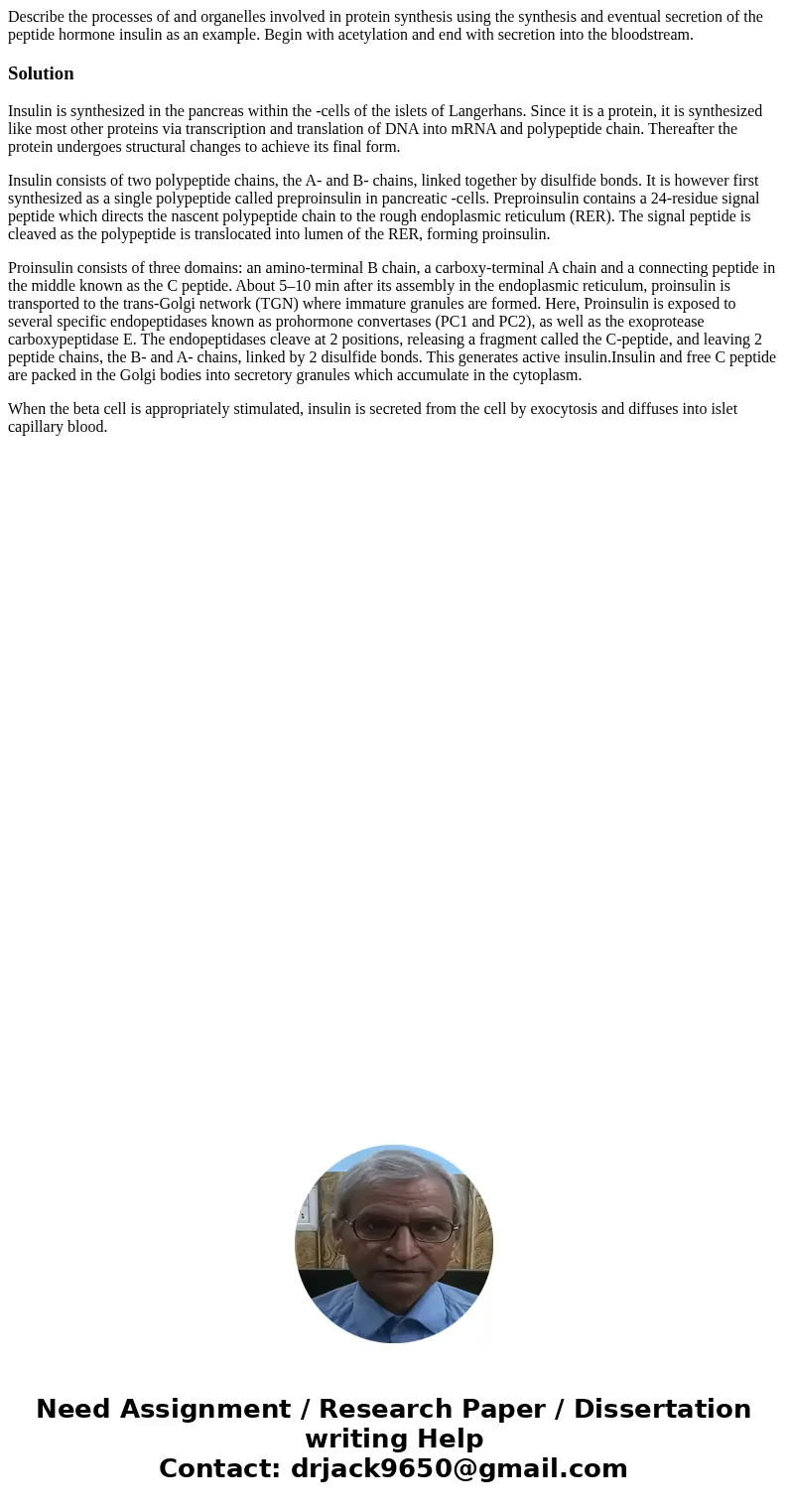Describe the processes of and organelles involved in protein
Solution
Insulin is synthesized in the pancreas within the -cells of the islets of Langerhans. Since it is a protein, it is synthesized like most other proteins via transcription and translation of DNA into mRNA and polypeptide chain. Thereafter the protein undergoes structural changes to achieve its final form.
Insulin consists of two polypeptide chains, the A- and B- chains, linked together by disulfide bonds. It is however first synthesized as a single polypeptide called preproinsulin in pancreatic -cells. Preproinsulin contains a 24-residue signal peptide which directs the nascent polypeptide chain to the rough endoplasmic reticulum (RER). The signal peptide is cleaved as the polypeptide is translocated into lumen of the RER, forming proinsulin.
Proinsulin consists of three domains: an amino-terminal B chain, a carboxy-terminal A chain and a connecting peptide in the middle known as the C peptide. About 5–10 min after its assembly in the endoplasmic reticulum, proinsulin is transported to the trans-Golgi network (TGN) where immature granules are formed. Here, Proinsulin is exposed to several specific endopeptidases known as prohormone convertases (PC1 and PC2), as well as the exoprotease carboxypeptidase E. The endopeptidases cleave at 2 positions, releasing a fragment called the C-peptide, and leaving 2 peptide chains, the B- and A- chains, linked by 2 disulfide bonds. This generates active insulin.Insulin and free C peptide are packed in the Golgi bodies into secretory granules which accumulate in the cytoplasm.
When the beta cell is appropriately stimulated, insulin is secreted from the cell by exocytosis and diffuses into islet capillary blood.

 Homework Sourse
Homework Sourse